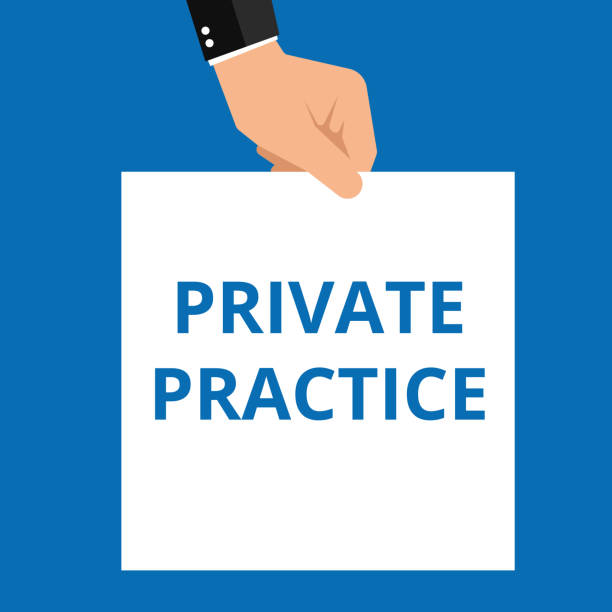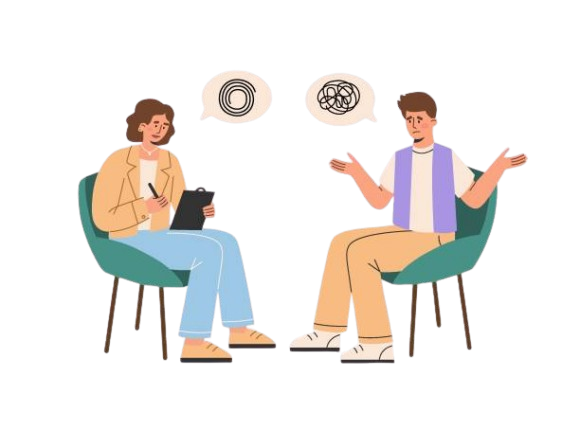Understanding Private Pay Therapy: Why It’s a Smart and Empowering Choice for Your Mental Health

When people consider starting therapy, one of the first questions they ask is: “Do you take my insurance?” While this is a reasonable question, it may not always lead to the best care or experience. At Indy Mental Health and Wellness, I want to shed light on private pay therapy—what it is, how it compares to using insurance, and why it can be a more empowering and flexible choice for your mental health journey. What Is Private Pay Therapy? Private pay therapy simply means you pay your therapist directly for services, rather than going through your health insurance provider. You are responsible for the cost of your sessions, typically on a per-visit basis, and can choose whether or not to seek reimbursement from your insurance if you have out-of-network benefits. This may sound daunting at first, but private pay therapy has many advantages—and for many people, it’s actually a better fit, both financially and clinically. Insurance vs. Private Pay: Key Differences Feature Insurance Private Pay Diagnosis Required Yes – a mental health diagnosis is required to justify treatment. No – no diagnosis needed to begin or continue therapy. Privacy Insurance companies access records and treatment plans. Sessions are fully confidential between you and your therapist. Couples Counseling Rarely covered; not considered “medically necessary.” Always available; no restrictions. Session Limits Often limited to a number of sessions or subject to approval. You and your therapist decide the length and frequency of treatment. Deductibles Must meet a high deductible before benefits apply. No deductible required – you pay per session. Provider Choice Must choose from a limited in-network list. You choose your ideal therapist, regardless of network. Why Private Pay Can Be a Better Option No Diagnosis Required When using insurance, your therapist is required to assign you a mental health diagnosis to justify treatment. This diagnosis becomes part of your permanent medical record, which can impact future insurance eligibility, employment applications, or life/disability insurance. With private pay, no diagnosis is required unless you want one. You can seek support for life transitions, relationship challenges, stress, burnout, or personal growth—without being labeled or pathologized. Full Privacy and Confidentiality Insurance companies often require detailed documentation of your symptoms, treatment plans, and progress. This means a third party is involved in your care decisions. Private pay therapy offers full confidentiality. Your sessions are between you and your therapist—period. Freedom to Focus on What Matters to You Many important issues people want to work on—such as improving communication in relationships, processing grief, or navigating career changes—don’t qualify for insurance reimbursement. This is especially true for couples counseling, which is almost never covered by insurance. With private pay, you can pursue the therapy that fits your needs, not just what’s covered. No Insurance Hassles or Surprise Bills Using insurance often comes with frustrations: high deductibles, pre-authorization requirements, denied claims, and unexpected costs. With private pay, you know exactly what you’re paying and can plan accordingly. What About Out-of-Network Benefits? Many insurance plans offer out-of-network reimbursement, which means you can still get some financial support even when seeing a therapist who doesn’t take insurance directly. Here’s how it works: 1. You pay for your session up front. 2. Your therapist provides you with a superbill (an itemized receipt with diagnosis and service codes). 3. You submit this to your insurance company for partial reimbursement. 4. You get a check or direct deposit if your plan offers out-of-network mental health coverage. Depending on your plan, you might get 50–80% of the session fee reimbursed after your out-of-network deductible is met. If you’re unsure whether you have these benefits, we recommend calling the number on the back of your insurance card and asking: · Do I have out-of-network mental health coverage? · What is my out-of-network deductible? · How much will I be reimbursed for CPT code 90837 (a common code for 60-minute therapy sessions)? Therapy is an investment in your long-term well-being, relationships, and quality of life. While using insurance may seem like the most economical route at first glance, private pay therapy offers: · Greater flexibility · Deeper privacy · Personalized treatment · Access to services like couples therapy · Freedom from the bureaucracy of insurance systems At Indy Mental Health and Wellness, I believe you deserve therapy that works for you—not your insurance company. If you’re ready to start your therapy journey or have questions about how private pay works, we’re here to help. Reach out to schedule a free consultation or learn more. Click HERE to schedule an appointment!
HSA vs. FSA: What They Are, How They Work, and How to Use Them for Therapy

When it comes to paying for mental health services, many people don’t realize they can use tax-advantaged accounts like HSAs (Health Savings Accounts) and FSAs (Flexible Spending Accounts). These accounts can make therapy more affordable—even if you’re paying out-of-pocket. At Indy Mental Health and Wellness, I accept both HSA and FSA cards. Here’s what you need to know about how they work, how they’re different, and how to get one—especially if you’re self-employed. What Is an HSA? An HSA (Health Savings Account) is a special savings account that lets you put aside pre-tax money for qualified healthcare expenses—including therapy. Key features: · Must be paired with a High Deductible Health Plan (HDHP) · Contributions are tax-deductible · Funds roll over year to year · You can invest your HSA funds (like a retirement account) · You keep the account even if you change jobs or health plans Great for: Long-term health savings, especially if you’re healthy and don’t need to spend the money right away. What Is an FSA? An FSA (Flexible Spending Account) is an employer-sponsored account that also lets you use pre-tax dollars for healthcare expenses. Key features: · Funded through your employer (not available if you’re self-employed) · Use-it-or-lose-it: Most funds must be used by the end of the plan year · Cannot be invested or carried over between jobs · No need for a high-deductible health plan Great for: Employees with predictable healthcare expenses and employer-provided benefits. What Can You Use HSA/FSA Funds For? Both HSAs and FSAs can be used to cover qualified medical expenses, including: · Individual therapy · Couples counseling (if medically necessary and prescribed) · Psychiatric care · Medication management · Some wellness and preventative services At Indy Mental Health and Wellness, I accept both HSA and FSA cards, just like a debit or credit card. How to Use Your HSA/FSA Card for Therapy 1. Confirm your therapist accepts HSA/FSA cards (I do!) 2. Swipe your card at the time of service, or 3. Pay out of pocket and submit for reimbursement if needed 4. Save your receipts in case you need to verify the expense later Be sure to check with your HSA/FSA provider for any documentation requirements—some might ask for a receipt with CPT codes or a letter of medical necessity. What If You’re Self-Employed? If you’re self-employed, you can’t open an FSA (it’s only available through employers), but you can absolutely open an HSA if you meet the requirements. To qualify for an HSA: · You must be enrolled in a High Deductible Health Plan (HDHP) · You cannot be enrolled in Medicare · You cannot be claimed as a dependent on someone else’s tax return How to open one: 1. Shop for a qualifying HDHP through the Marketplace or a private insurer 2. Choose an HSA provider (many banks, credit unions, and investment platforms offer them) 3. Open the account and start contributing (up to the IRS limit each year) For 2025, the HSA contribution limits are: · $4,150 for individuals · $8,300 for families (+ $1,000 catch-up if you’re 55+) Using an HSA or FSA to pay for therapy is a smart, tax-savvy way to prioritize your mental health. Whether you’re employed or self-employed, these accounts can help make therapy more accessible and affordable. Have questions about how to use your HSA or FSA for sessions at Indy Mental Health and Wellness? We’re happy to walk you through it. Click HERE to schedule an appointment!
Laugh More, Stress Less: The Mental Health Benefits of Laughter

We’ve all heard the phrase, “laughter is the best medicine.” It turns out—it’s not just a saying. Laughter has real, measurable benefits for both your physical and mental health. And in a world that can feel heavy, stressful, and fast-paced, laughter can be a powerful (and often overlooked) wellness tool. At Indy Mental Health and Wellness, we believe healing doesn’t always have to be heavy. Sometimes, it can be lighthearted, playful, and full of joy. Here’s what the science says about how laughter can support your mental health—and how to welcome more of it into your life. What Happens in Your Brain When You Laugh? Laughter triggers a complex chain of reactions in the brain and body. When you laugh, your brain releases: · Dopamine, the “feel-good” chemical · Endorphins, your body’s natural painkillers · Oxytocin, the “bonding” hormone that fosters connection It also reduces levels of cortisol, the stress hormone. In other words, laughter isn’t just an emotional response—it’s a full-body experience that can lift your mood, calm your nervous system, and deepen your relationships. Mental Health Benefits of Laughter Reduces Stress Laughter interrupts stress responses and helps regulate your nervous system. Even a few minutes of genuine laughter can leave you feeling more relaxed and grounded. Boosts Mood Laughter increases dopamine, which improves mood and reduces symptoms of depression and anxiety. It’s a quick, natural mood booster—no side effects required. Strengthens Connection Laughing with others fosters feelings of safety, belonging, and emotional closeness. In couples or families, shared laughter can ease conflict and improve communication. Improves Perspective Laughter gives us a break from overthinking, catastrophizing, or rigid thinking patterns. It can help us zoom out and access a more flexible, creative mindset. Builds Resilience When we can laugh even a little in difficult moments, we build emotional resilience. Laughter doesn’t minimize pain—it reminds us we’re still human, still connected, and still capable of joy. Is Laughter Therapy a Real Thing? Yes! Laughter therapy—or humor therapy—uses intentional laughter to support emotional healing. It’s used in hospitals, wellness workshops, and even some forms of group or individual therapy. Some therapists (me!) integrate humor naturally into their work as a way to create trust and reduce shame. And good news: your brain doesn’t always know the difference between genuine and intentional laughter. Even “fake” laughter can still trigger positive responses! How to Invite More Laughter into Your Life You don’t need to become a stand-up comic to laugh more. Try these: · Watch a favorite funny show or comedy special · Spend time with people who make you laugh · Follow accounts that share light, wholesome humor · Play a silly game or try improv with a partner or friend · Give yourself permission to laugh—even in hard times · Reflect on inside jokes or funny memories Laughter isn’t about ignoring your problems. It’s about giving your nervous system a break, reconnecting with joy, and remembering your wholeness. Laughter isn’t a cure-all—but it is a powerful tool in your mental health toolkit. It’s free, it’s contagious, and it’s deeply human. At Indy Mental Health and Wellness, I believe in a holistic approach to mental health—one that honors both the grief and the joy, the tears and the laughter. If you’re feeling disconnected from joy, therapy can help you get back to yourself—including the parts of you that love to laugh. Click HERE to schedule an appointment!
How to Leave a Narcissist: Reclaim Your Freedom and Healing

Leaving a relationship with a narcissist is rarely simple. Narcissistic abuse is emotionally draining and manipulative, leaving many feeling confused, isolated, and trapped. If you’ve decided it’s time to leave, you’re already taking a courageous step toward reclaiming your life. Why Is Leaving a Narcissist So Hard? Narcissists often use tactics like gaslighting, love bombing, blame-shifting, and isolation to maintain control. This can make you doubt your reality and question your worth. They may seem charming and apologetic between episodes, creating a push-pull dynamic that’s hard to break. Recognizing the abuse and understanding it’s not you is the first crucial step. Prepare Emotionally and Practically Set Firm Boundaries Begin limiting contact where you can. Avoid engaging in arguments or attempts to “win” the narcissist over. Use the gray rock method—be emotionally neutral and uninteresting to reduce their attempts to provoke or manipulate you. Make a Clear Exit When you’re ready, leave decisively. Ambivalence or explaining yourself too much may invite manipulation. Keep your message simple and firm: the relationship is over. If you share children or other responsibilities, establish clear boundaries and consider legal advice to protect yourself and your wellbeing. No Contact (or Low Contact) Is Key Cutting off contact is crucial for healing. Narcissists often try to hoover (pull you back in) with promises, guilt, or threats. Resist these attempts. No Contact gives you space to heal and rebuild your identity without constant manipulation. Focus on Healing You Deserve Respect and Love Leaving a narcissist is not just about ending a relationship—it’s about reclaiming your worth and creating a life of safety and respect. The path may be challenging, but every step away from abuse is a step toward freedom. You are not alone. Help is available, and healing is possible. Click HERE to schedule an appointment and start your journey towards freedom from the narcissist in your life!
Narcissistic and Psychological Abuse: What It Is and How to Heal

Abuse isn’t always physical. Some of the most damaging wounds are the ones we can’t see—those inflicted through manipulation, gaslighting, and emotional control. Narcissistic andpsychological abuse are often misunderstood, overlooked, or dismissed. Yet, for those who havelived through it, the effects can be long-lasting and deeply painful. Because of the stress aperson experiences while in an abusive relationship, many times there are serious physical healthimpacts such as the onset of auto-immune disorders, increased blood pressure, and even hairloss.What Is Narcissistic Abuse?Narcissistic abuse stems from individuals who have narcissistic traits or suffer from NarcissisticPersonality Disorder (NPD). At its core, narcissism involves an inflated sense of self-importance,entitlement, a deep need for admiration, profound insecurity and emptiness, and a little to noempathy for others. Nowadays, the term “narcissist” is often mis/over-used. Narcissism existson a spectrum. Just because someone has narcissistic traits doesn’t mean they qualify for adiagnosis of NPD. And only mental health (or other qualified professionals) can diagnose NPD.When someone with these traits forms a close relationship—romantic, familial, or professional—it’s very common for them to use manipulation, control, and emotional exploitation to maintain dominance. Narcissistic abuse is often subtle at first, but over time, it erodes a person’s self-worth, autonomy, and emotional stability. Common signs of narcissistic abuse: Psychological and narcissistic abuse are deeply damaging, but they don’t have to define you.Your experience matters, your voice matters, and you are not alone. With the right support andcare, you can heal and reclaim your power. You deserve safety, dignity, and respect.If you or someone you know is experiencing abuse of any kind, please don’t wait to seekhelp.Other resources for support:
What is Codependency?

You’ve heard the term “codependency”. But what does it really meanand how does it affect your life? Codependency is a very complex anddifficult issue that affects many people in different ways. It is usuallycharacterized by individuals who have an excessive emotional orpsychological dependence on another person, often to the point ofsacrificing their own needs and wants to please or accommodate thatperson.If this sounds like you, don’t worry, you aren’t alone! Codependency isa common pattern of behavior that often develops in childhood as aresponse to an emotionally distant parent or caregiver. For example, aparent or spouse/partner who struggles with addiction or another mentalhealth disorder that makes it difficult for them meet another’s emotionalneeds. As a way of compensating, some people develop unhealthyhabits to try and get those needs met.People who are codependent often have difficulty setting boundariesand may struggle with feelings of guilt, shame, and anxiety. It can be adifficult issue to overcome, but fortunately, counseling can be incrediblyhelpful for people who are struggling with codependency. Throughcounseling, those unhealthy codependent habits can be replaced byhealthier, more effective ways of behaving.When it comes to counseling for codependency, there are severaldifferent approaches that can be helpful. For example, talk therapy canbe very effective for helping people to identify the underlying causes oftheir codependency, while cognitive-behavioral therapy can help peopleto develop healthier coping mechanisms and ways of thinking.Here are 5 quick tips for recovering from codependency: Be patient: Recovering from codependency is a process, and it’simportant to be patient with yourself. Don’t expect to overcome yourcodependency overnight and celebrate small victories along the way.With these tips, counseling, and support from resources likeCodependents Anonymous, people who are struggling withcodependency can begin to recover and live fuller, more fulfilling lives.If you are ready to start detaching and healing from your codependentways, I’m here to support you. Set boundaries: Learning to say “no” and setting boundaries is animportant part of recovering from codependency. It’s important torecognize that you can’t control other people’s behavior, and that it’sokay to prioritize your own needs and wants. Practice self-care: Taking care of yourself is essential whenrecovering from codependency. This includes practicing mindfulness,engaging in activities that you enjoy, and taking care of your physicalhealth. Seek support: Joining a support group like Codependents Anonymouscan be incredibly helpful for people who are struggling withcodependency. Being around people who understand what you’re goingthrough can be very validating and empowering. To find a support groupnear you, visit https://coda.org Address underlying issues: Often, codependency is rooted in deeperissues like childhood trauma or low self-esteem. Addressing theseunderlying issues in therapy can be helpful for long-term recovery.
